Tasting: Four Classic Saint Lucian Rums (Chairman’s Reserve, Admiral Rodney)
Photos via Spiribam Drink Features rum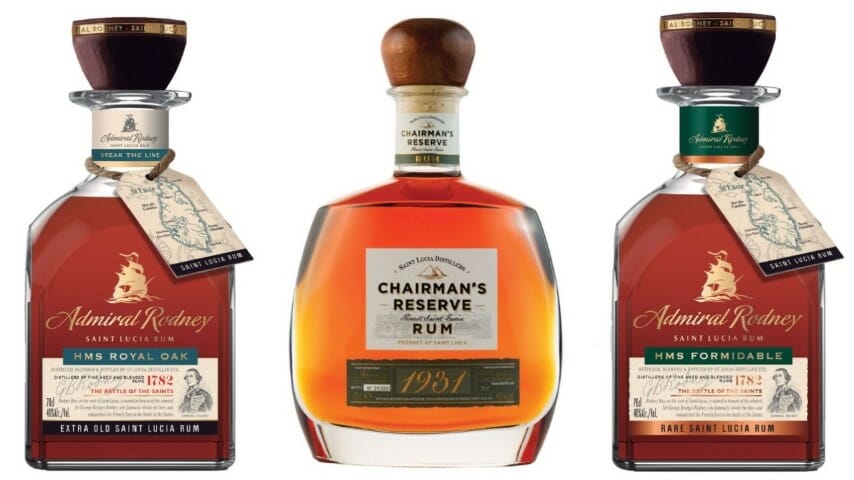
Nearly every island in the Caribbean and Greater/Lesser Antilles has at least one producer of rum, and in each locale, the distillers tend to honor their area’s traditions even now, hundreds of years after commercial rum production began. In many of those locations, the styles of rum production can be traced back to the influence of colonialism, as the European powers that settled any given area (British, French, Spanish, Portuguese, etc) each left their mark, which coalesced into a loose idea of “English-style” or “Spanish-style” rums. Such terms, however, really only hint at the full story of an island like Saint Lucia.
This is a small island with a particularly checkered past, when it comes to control by foreign powers. Although the French were the first Europeans to settled there in 1660, the British quickly took control in 1663, kicking off a series of changes in rule. Ultimately, Saint Lucia was ruled no fewer than seven times each by the French and British between 1660 and 1814, when the British regained control for good. The island remained a colony until 1979, when it became an independent state and a member of the Commonwealth of Nations.
Perhaps it ultimately makes sense, then, that the rums of the island’s single distillery, St. Lucia Distillers, might best be described as predominantly English in style, but with a little bit of French influence as well. The company produces a portfolio of more than 25 rum products across a range of different brands and lineups. These are predominantly made from molasses imported from off the island, as Saint Lucia lacks a modern sugar cane refining industry of its own. However, small amounts of cane juice rum are also produced at the distillery from locally grown sugar cane located adjacent to the distillery itself—just 15 acres of fields, but enough to add some rhum agricole-like herbaceousness and complexity to certain St. Lucia Distillers products. For much more information on the history of the distillery, I highly recommend this feature from Cocktail Wonk, which is as typically detailed as you would expect.
Until recently, however, I had never tasted any of the products from St. Lucia Distillers, and thus had never sampled Saint Lucian rum. That changed recently thanks to some samples from current parent company Spiribam, the spirits division of Groupe Bernard Hayot (GBH). GBH is a major player in nearby Martinique’s rhum agricole industry, owning sister brands Rhum Clemént and Rhum J.M. The products of SDL, meanwhile, might be thought of as the molasses-based flip side to the coin of those classic French-style agricoles.
I was able to taste four rums from SDL: Two from the Admiral Rodney line, and two from the Chairman’s Reserve line. With that said, let’s get to tasting.
Admiral Rodney Royal OakPrice: $80
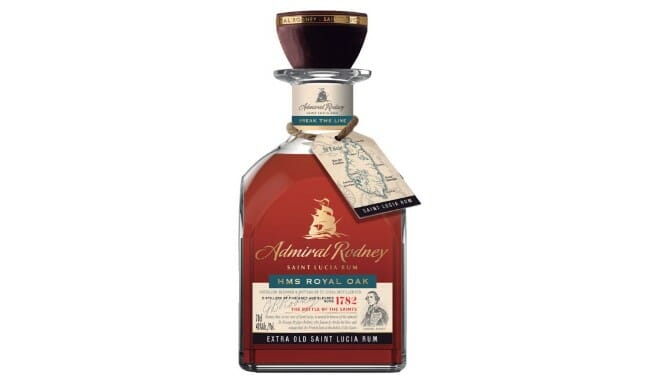
The Admiral Rodney line of rums is named for a British admiral (George Rodney) who took part in the Battle of the Saintes in 1782, a pivotal naval engagement between the British and French. Each of the three expressions in this line fittingly take their name from one of Rodney’s ships: Princessa, Royal Oak and Formidable, with ascending age statements and price tags. All three are exclusively column-distilled rums, which means they’re somewhat lighter bodied than pot-distilled rums or blends of pot and column distillate, as is found in the Chairman’s Reserve lineup. Regardless, these rums have some decent age statements, and fairly high price tags as a result.
The Royal Oak specifically is the original Admiral Rodney blend, and contains 7-12 year old Coffey still rums that have exclusively been aged in former American bourbon casks. No particular frills here—just a standard aged rum, bottled at the baseline 40% ABV (80 proof).
The nose here really gives me one immediate impression—nougat, which isn’t a note I always find myself picking up. It has something of a marshmallow-like sweetness, with perhaps a touch of marzipan and some decent oak. On the palate, Royal Oak has significant sweetness and a strong focus on toasted sugar flavors. There are hints of cigar wrapper and dessert banana, but this strikes me as a fairly uncomplicated aged rum that zeroes in on clean flavors—especially one that reminds me very much of turbinado sugar crystals. There’s a light spiciness, with hints of cinnamon and clove, but you can feel the relative cleanness of their column still distillation—there’s less estery character and spice than I’ve become used to in Barbados and Jamaica aged rums.
Overall, at this price point especially, I find myself wishing for a bit more complexity or at least a bit of a bump in proof point. With that said, I feel like the Admiral Rodney line is meant to deliver these sort of streamlined, dark sugar flavors.
Admiral Rodney FormidablePrice: $130
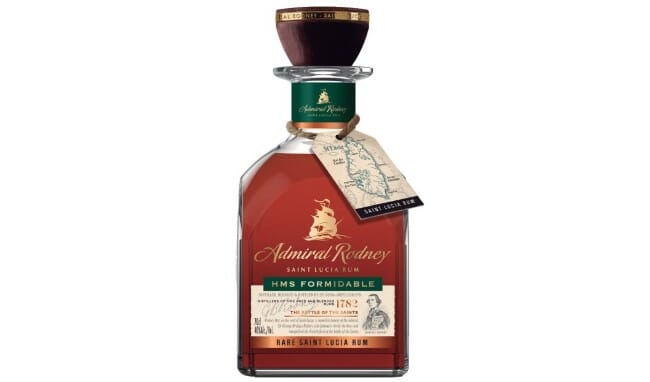
The big brother of the Admiral Rodney is named for the titular admiral’s flagship, and the press materials say it is drawn “exclusively from the lowest portion of the Coffey still possible, resulting in a much heavier and more flavorful rum.” Like the Royal Oak, this is aged exclusively in American ex-bourbon barrels, but has a higher average age statement of 9-12 years.
In comparison with the Royal Oak, Admiral Rodney Formidable evolves in some nice ways. I get more dark frutiness on the nose, with a pleasantly plum/blackberry-like jamminess, which segues into rich caramelized sugar flavors on the palate. This is big in the “molasses ginger cookie” dimension, while also delivering deeper and more persistent notes of oak and spice. Candied ginger and cinnamon sugar are star players, and there’s something of a pine/mint combo teasing around the edges. The oak astringency reins in the more overt residual sweetness a bit in comparison with the former rum, and leaves this as the more elegant of the two, while a prickly spice might make one think that the proof had been bumped up a bit.
Still, $130 is a pretty formidable price tag itself. This was one of the more enjoyable samples I had in this group, but it’s hard to say I would be lining up for a bottle at that price point.
Chairman’s Reserve Spiced RumPrice: $28
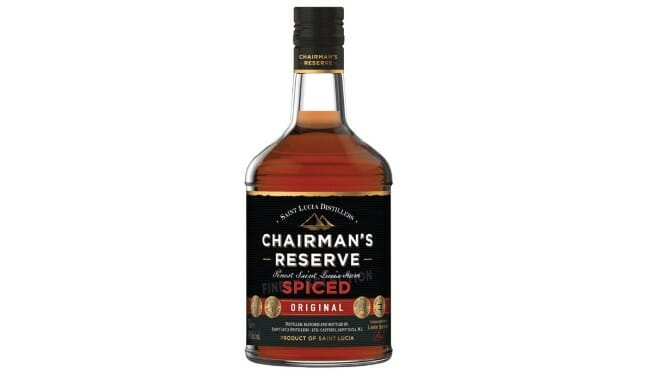
I will freely admit it: Spiced rum really isn’t my thing, either for neat drinking or cocktails. If I’m drinking rum neat, I’m not going to want something infused with big, in-your-face spice flavors. And if I’m mixing or making cocktails, I’d rather control my own spice additions with various syrups and liqueurs common to tiki cocktails. That leaves spiced rum as something of an odd-drink-out, and I don’t ever really keep spiced rum bottles in my own bar.
Chairman’s Reserve Spiced Rum can certainly boast an interesting description, though, and an approachable price tag. According to the distillery, it begins with the base rum of the Chairman’s Reserve line—a mix of pot and column distillate, unlike Admiral Rodney—and is then “steeped with ‘Bois Bande,’ a local Caribbean bark culturally known for its aphrodisiac qualities.”
Alright then! Aphrodisiac rum. Beyond that, “added to the rum are local spices and fruits such as cinnamon, clove, nutmeg, vanilla, allspice lemon and orange peels.”
The result is pretty unusual. The citrus in particular really pops on the nose, with an almost curacao-like intensity, combined with a melange of spices. You get some cinnamon, some clove, some allspice, but it’s difficult to zero in on any one spice note that is prominent. On the palate, I was immediately surprised that this doesn’t register as very “rummy” or like your typical molasses-based rum, having an almost amaro-like character thanks to the combination of citrus, vanilla and spice. It even transitions into a slightly bitter finish that again has me thinking “amaro,” which is hardly the thing I was expecting to be imagining when I went to sample a spiced rum. This isn’t something I would be turning to for neat drinking, and its flavors might even be too ebullient for me to use it as a base spirit, but it might be interesting if used as more of a liqueur or cocktail component. It’s certainly not the by-the-books spiced rum I was expecting, I can tell you that.
Chairman’s Reserve 1931 Limited EditionPrice: $100
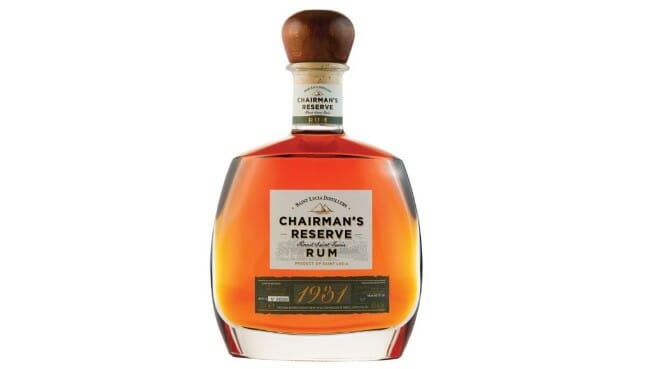
I’m not sure why exactly this is referred to as a limited edition, because it seems to have been a made into a permanent, premium part of the Chairman’s Reserve lineup for the last few years, but it’s not really important. What is important is the liquid in this bottle: The crown jewel of the St. Lucia Distillers collection, as far as I’m concerned. This is some absolutely lovely rum.
The 1931 is a very complex blend of both pot- and column-distilled rums between 6 and 11 years of age, aged in a combination of bourbon and port casks, and bottled at a more substantial 46% ABV (92 proof). As an extra X-factor, it also contains a notable percentage of sugarcane juice rum, distilled from the estate’s own sugarcane fields next to the distillery. The distillery refers to this as “agricultural rum,” distinct but related to the concept of rhum agricole, but presumably similar in character. This portion is effectively the most “Lucian” product the distillery makes, given that everything about the spirit hails from Saint Lucia.
The results are excellent. The nose is deeper and funkier than the Admiral Rodney samples, with attractive notes of burnt sugar, toasted oak and clove, along with dried fruit, light earthiness and tobacco. On the palate, a lovely, deep toffee character is met by dried fruits and plenty of roast, which segues into a beautiful dark chocolate that is perhaps contributed by those port barrels. Either way, the dark cocoa/coffee notes help lift up this rum, which lights up the tongue with more assertive flavors and a finish of dark fruit and cinnamon sugar. This is a very pleasant dram indeed, and the $100 price tag strikes me as a fair trade for a unique product. If I’m splurging on one of these bottles, it’s certainly the 1931 I’m walking away with.
Jim Vorel is a Paste staff writer and resident brown liquor geek. You can follow him on Twitter for more drink writing.